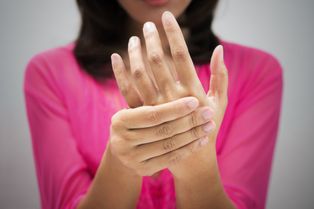
What Is Arthritis?
Arthritis is an inflammation of the joints. Arthritis can affect one or several joints. It has been found that there are over 100 different types of arthritis each with different causes and method of treatment. Osteoarthritis is the most common form of all the other types of arthritis. Other common rheumatic conditions associated with arthritis include gout, fibromyalgia and rheumatoid arthritis (RA).
Arthritis symptoms usually develop over time, but they can also occur suddenly. Arthritis is most commonly seen in adults older than 65 but can also develop in children, adolescents, and young people. It has been shown that arthritis is more common in women than in men and in individuals who are obese.
Rheumatic conditions usually include pain, stiffness, stiffness, and swelling in and around one or more joints. The symptoms associated with this condition can develop gradually or suddenly. Some rheumatic conditions may also include the immune system and various internal organs of the body. Some forms of arthritis, such as rheumatoid arthritis and lupus (SLE), may affect more organs and result in several symptoms.
Causes of Arthritis
As mentioned above, there are two main types of arthritis and they are osteoarthritis and rheumatoid arthritis and they have been found to cause damage to the joints in different ways.
Osteoarthritis
This is the most common type of arthritis and it involves wear and tears damage to the cartilage joint, the hard, slick coating on the ends of bones. Sufficient damages can lead to bone grinding directly on the bone, causing pain and limited movement. This wear and tear can happen for years, or it can be accelerated by joint injury or infection.
Rheumatoid arthritis
In rheumatoid arthritis, the immune system of the body attacks the lining of the joint capsule, a tough membrane that encloses all the joints parts. This lining, called the synovial membrane, becomes inflamed and swollen. The disease process can ultimately destroy the cartilage and bone in the joint.
Risk Factors
Below are the risk factors for arthritis:
1. A family history of arthritis. Some types of arthritis occur in families. So, individuals from this type of family are at a higher risk of developing arthritis. The genes play a greater role in making an individual be more susceptible to environmental factors that can trigger arthritis.
2. Age. Older individuals are at a greater risk of developing different types of arthritis including osteoarthritis, rheumatoid arthritis, and gout.
3. Sex. Some types of arthritis are common in women than in men such as rheumatoid arthritis, while other types of arthritis such as gout are common in men.
4. Previous joint injury. Individuals who have injured their joints from sports have a greater risk of developing arthritis in that joint later in future.
5. Obesity. Having excess pounds puts stress on joints, especially on knees, hips, and spine. Individuals who are obese have a higher risk of developing arthritis.
What are the Symptoms of Arthritis?
The most prevalent symptoms of arthritis are pains in the joint, stiffness and swelling. There is a reduced range of movement and you may feel skin redness around the joint. A lot of individuals with arthritis observe that their symptoms get worse in the morning.
In the case of rheumatoid arthritis, tiredness or loss of appetite may be felt which is due to inflammation caused by the activity of the immune system. You can also become anemic - which means there will be a decrease in your red blood cell count or you have a slight fever. If not treated, serious cases of rheumatoid arthritis can cause deformation of the joint.
Arthritis Treatment
Treatment for Heel Pain requires restoring the circulation and blood flow to the affected structures in your arthritic area. Pain is caused when swelling, inflammation and decreased circulation generate a blockage, which causes blood flow to be interrupted or slowed. Treatment for this issue requires breaking up the accumulated fluids in your arthritic area to allow for improved healing and quicker recovery.
Products recommended for symptoms of swelling, redness, pain, and inflammation, and if coolness makes your pain feel better:
Ice Substitute Poultice
Bruise Relief Liniment
Muscle Therapy Massage Oil
Products recommended when swelling and inflammation are gone, but you still feel pain, stiffness, weakness, and/or sensitivity in cold and damp weather, and if heat makes your pain feel better:
Pain Relief Liniment
Tendon and Ligament Poultice
Muscle Therapy Massage Oil





